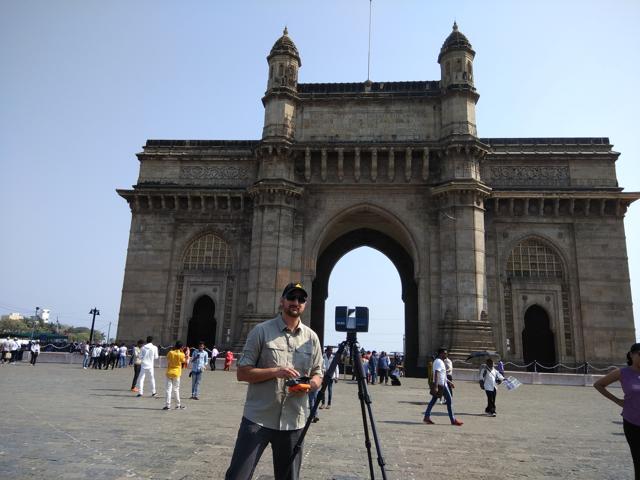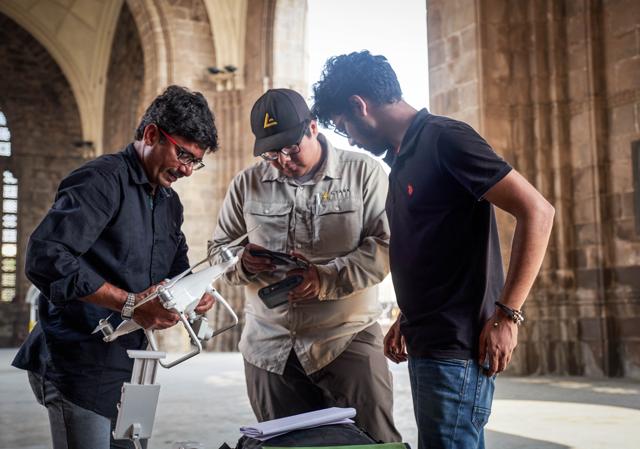Coming soon, a virtual 3D model of the Gateway of India
An American non-profit, CyArk, is in the midst of scanning, shooting and studying the iconic Mumbai structure with a view to creating a digital representation for future research
Angkor Wat, Mount Rushmore and now, the Gateway of India.

An American non-profit called CyArk — which aims to digitally preserve the world’s heritage monuments — is currently in the midst of scanning, shooting and studying Mumbai’s most iconic structure with a view to creating a virtual 3D model.
On Thursday, they invited journalists to see some of work they’ve done so far.
“The field work takes around five days to complete — that includes laser scanning, normal and aerial photography,” says Christopher Dang, field director for this project. “Since this particular monument has a huge footfall every day and extremely curious visitors, these five days are full of challenges.

The aim is to eventually have a perfectly accurate 3D digital model would help recreate the Gateway if the need ever arose, and meanwhile, will allow the local government to see exactly what’s going on inside and beneath all that basalt rock.
For one thing, the Gateway is facing erosion from the saltwater that periodically beats at it. Since February 19, the team from CyArk has been working from sunrise to sunset to capture images of the monument and signs of the erosion.
CyArk began this global project in 2003, and has since amassed digital records for over 200 heritage sites in 40 countries — including Angkor Wat in Cambodia, Australia’s Sydney Opera House, the Washington Monument and Mount Rushmore in the US and the UK’s Tower of London.

In Maharashtra, they have been working with the Directorate of Archaeology and Museums, in partnership with hardware developers Seagate Technology.
“The proposed project is truly beneficial for creating an easily accessible digital database of the monument, ensuring its enhanced protection and the formulation of comprehensive conservation policies,” said Tejas Garge of the directorate, in a statement.
The virtual blueprint of the Gateway of India will be used by the state archaeology department to compare changes in the exterior of the monument over time to see how salt water infiltration is damaging it.
This data can also be used to promote virtual tourism, if the government wants to, Dang says.
In five days, CyArk plans to have 3,000 to 5,000 photographs of the monument and more than 200 scans. “The data processing will take three or four weeks and we plan to finish the blueprint in two months,” says Dang.
Elsewhere in India, CyArk has digitally preserved the iconic Rani Ki Vav in Patan, Gujarat. Their next project: the Mysore palace.
Stay updated with all the Breaking News and Latest News from Mumbai. Click here for comprehensive coverage of top Cities including Bengaluru, Delhi, Hyderabad, and more across India along with Stay informed on the latest happenings in World News.
Stay updated with all the Breaking News and Latest News from Mumbai. Click here for comprehensive coverage of top Cities including Bengaluru, Delhi, Hyderabad, and more across India along with Stay informed on the latest happenings in World News.






